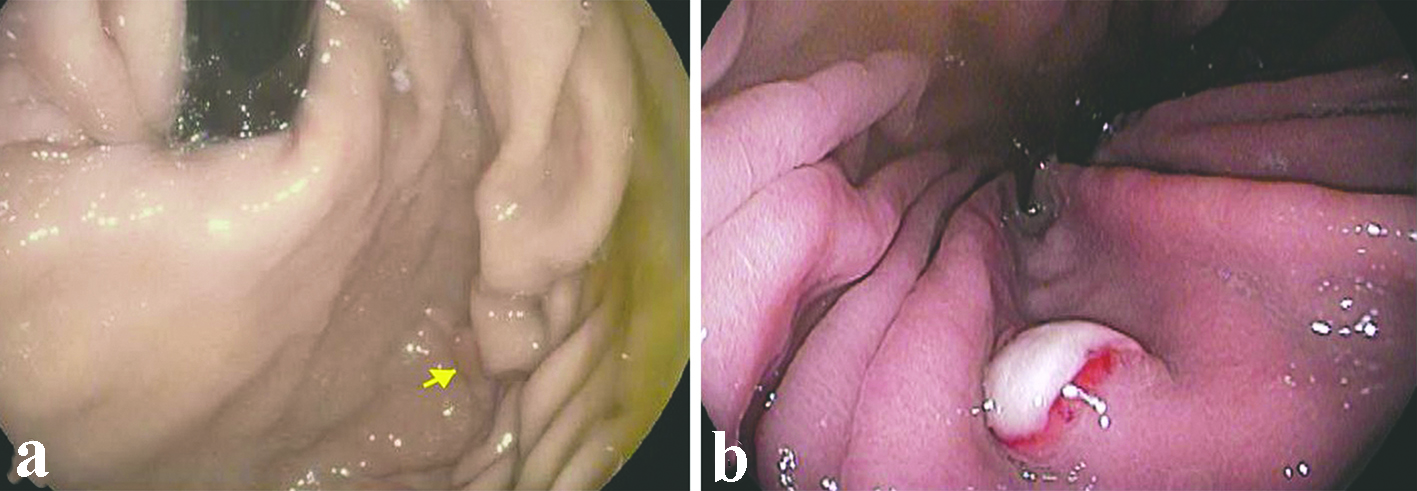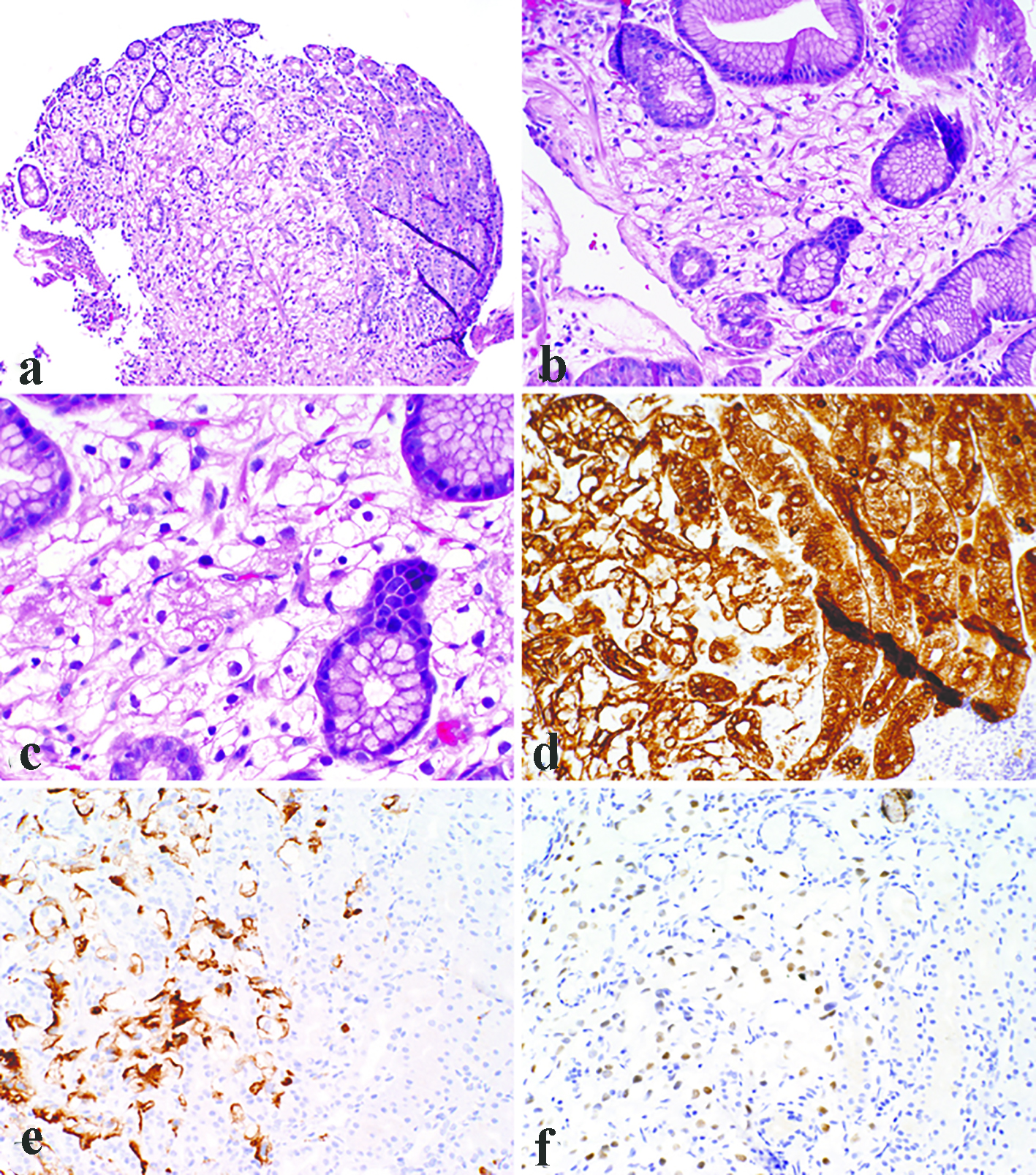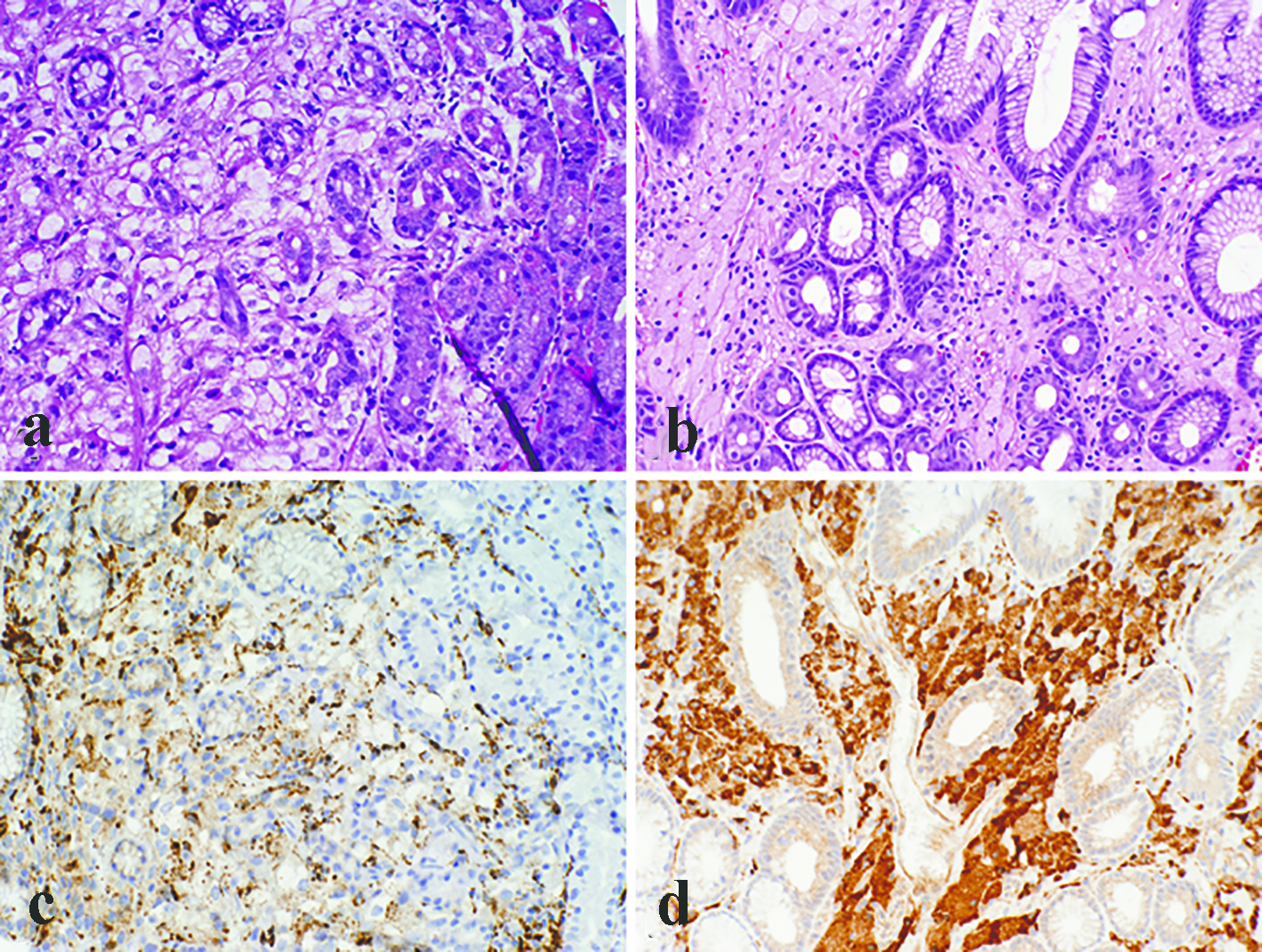
Figure 1. Representative endoscopic appearance of metastatic renal cell carcinoma as gastric mucosal lesions. (a) Metastatic renal cell carcinoma presented as a 0.4 cm polyp (arrow) without ulceration in the gastric body (case 2). (b) Metastatic renal cell carcinoma presented as a 0.8 cm sessile polyp with ulcerated surface in the gastric body (case 4).

Figure 2. Representative photomicrographs of metastatic clear cell renal cell carcinoma as gastric mucosal lesions. The lesions demonstrated a bland clear cell proliferation within the lamina propria (a). At the interface between the carcinoma and benign gastric mucosa, the clear cells infiltrated among gastric glands without gland destruction (b). The individual tumor cells showed cytoplasmic vacuoles, small nuclei, nuclear membrane irregularity, and occasional small pinpoint nucleoli (c). Immunohistochemistry demonstrated immunoreactivity for pancytokeratin (d), RCC (e), and PAX8 (f). (a, × 100; b, d, e, f, × 200; c, × 400).

Figure 3. Metastatic renal cell carcinoma with many foamy histiocytes intermingled with the tumor cells (a). However, at least focal nuclear atypia was appreciated in the tumor cells, and immunohistochemistry for CD68 showed patchy staining (c). In contrast, gastric xanthomas were completely devoid of atypia and the cytoplasm was foamy rather than clear (b). Immunoreactivity for CD68 was strong and diffuse in xanthomas (d) (a, b, c, d, × 200).


